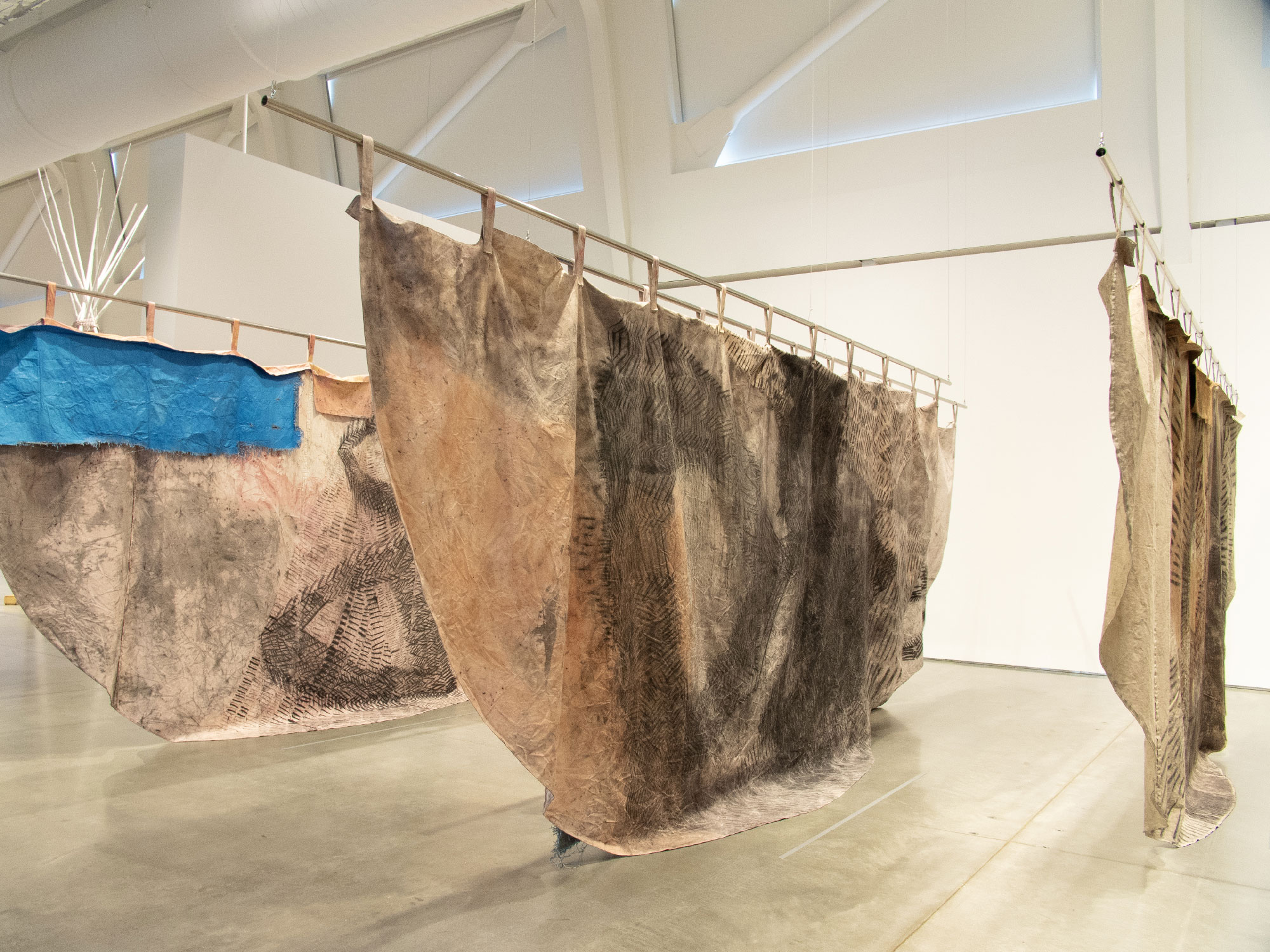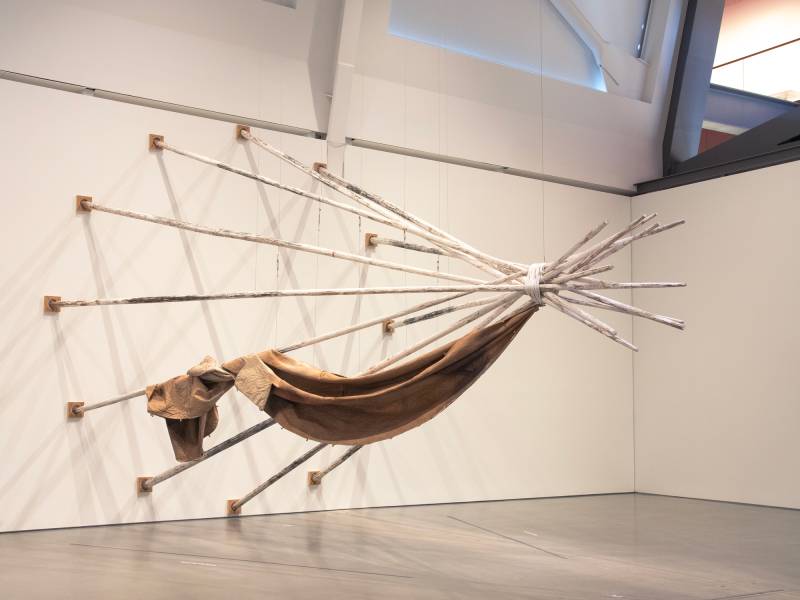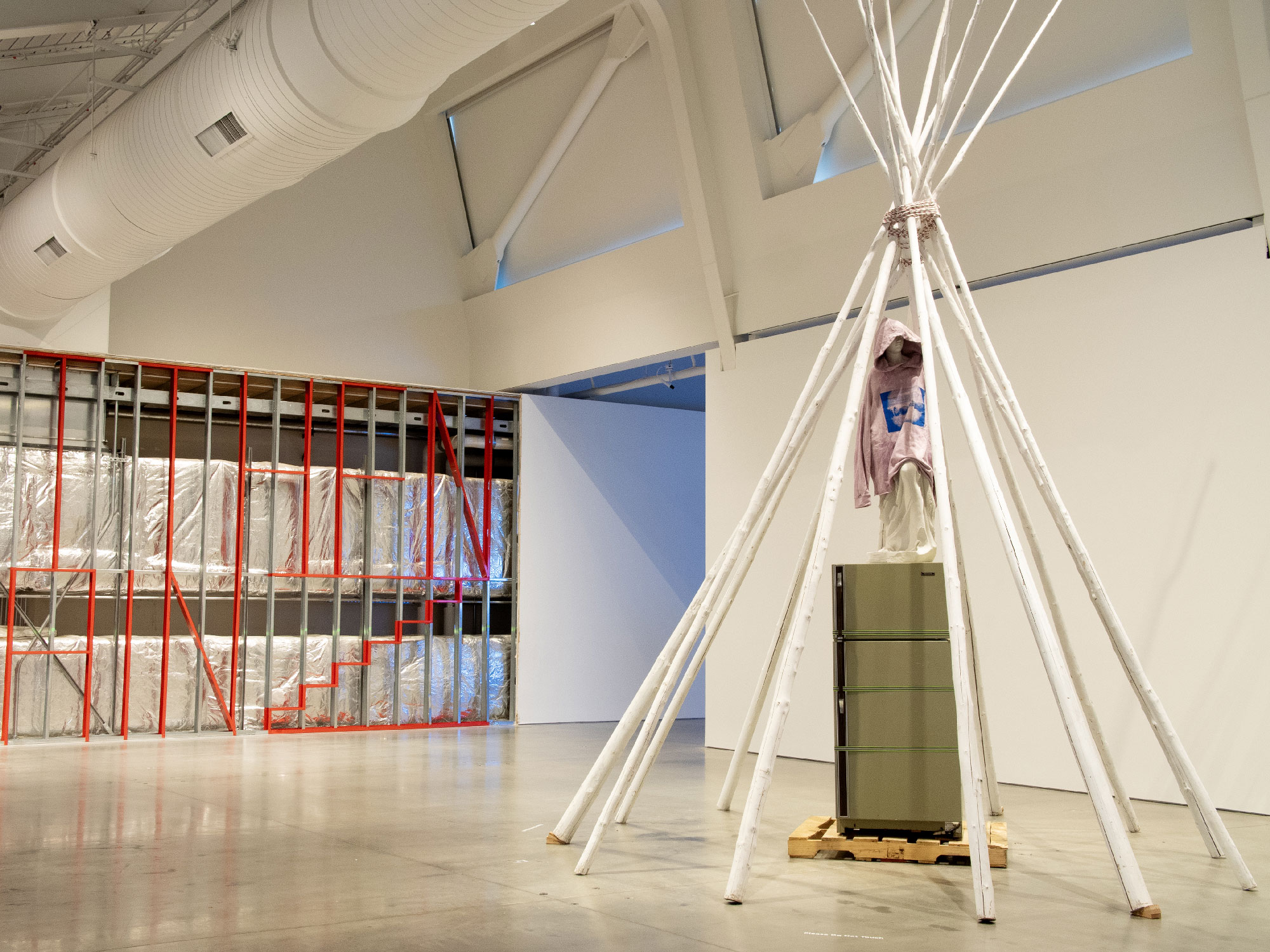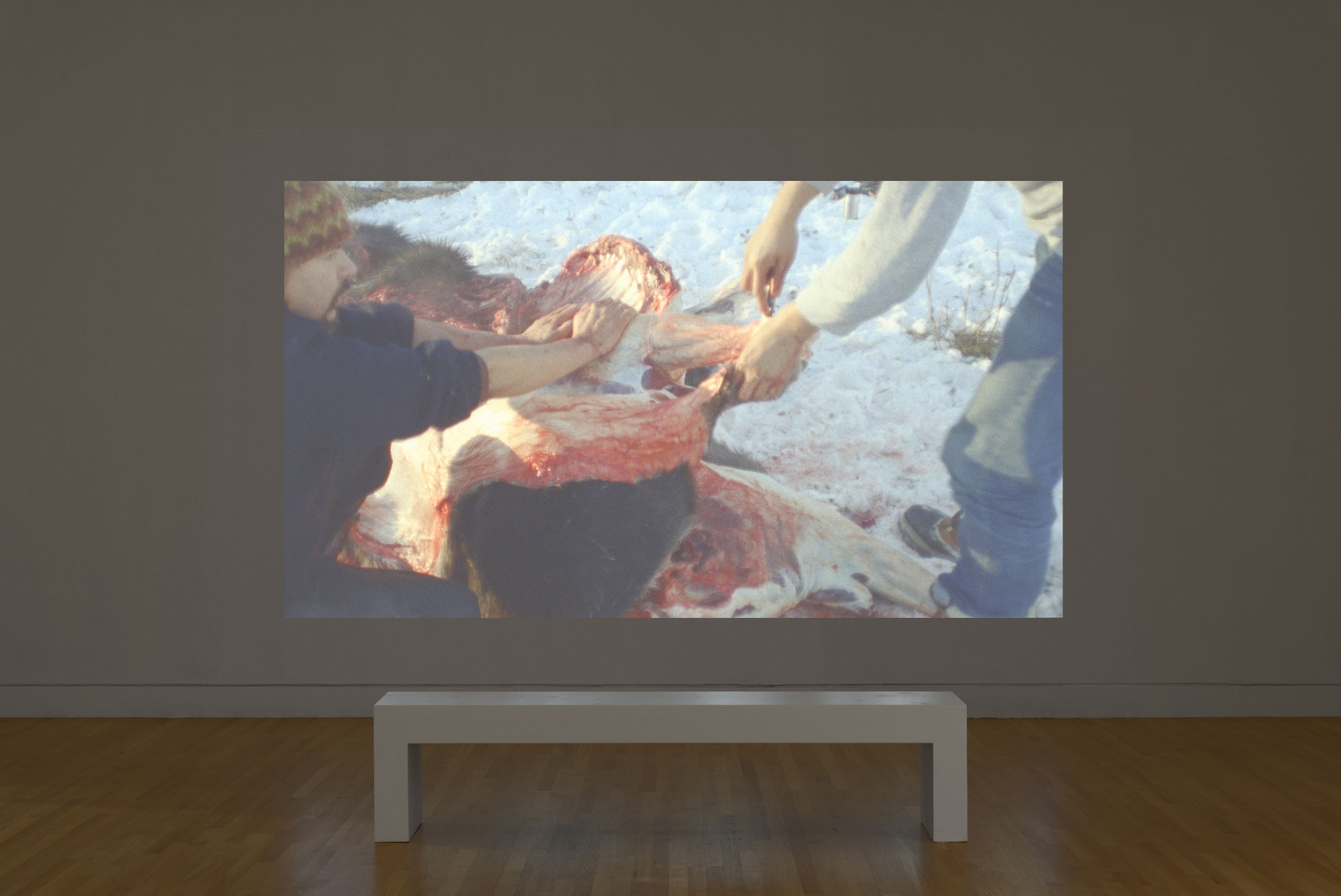When you first turn into the Berkeley Art Museum and Pacific Film Archive’s main exhibition space, watch your head. Jutting out from the wall sideways, in a splay of tapered wooden pole-ends, is a massive tepee — or at least the bones of one. The sumac-dyed canvas that might otherwise enfold the structure drapes over one side. What remains are the poles, knotted together near their tips and painted a streaky, ashen white.
The effect is twofold: The tepee, that endlessly appropriated icon of pastoral Indigenous life, is disentangled from any cutesy, passive conception. This one could snag you, if you’re not careful. And its exposed frame, sapped of color, becomes skeletal. Something has died. Don’t you remember?
Duane Linklater, the Omaskêko Cree artist behind this piece, titled dislodgevanishskinground, is deeply interested in the memory of things. For much of the past two decades, he has created art focused on the jagged edges where Indigenous and non-Native life meet, which is to say he has focused on the ways we have scrubbed clean our national memories to forget that these collisions took place, at one time or another, everywhere. (Linklater is from Northeastern Ontario, in Canada.) For Linklater, the story of colonialism’s bloody expansion — and the memory of all that it snuffed out — is buried deep in the objects we handle and the places we occupy every day.

mymothersside, BAMPFA’s survey of Linklater’s work from the last decade, serves as an excavation of these memories. It includes some 30 pieces in sculpture, painting and film, as well as one permanent architectural installation. Linklater composed almost all of the works from materials important to his and other Native cultures: animal hides, saplings, sumac, cochineal and charcoal. (These material choices render one major outlier — a series of colorless 3D-printed replicas of Indigenous artifacts from the Utah Museum of Fine Arts in Salt Lake City — utterly lifeless by comparison).
The exhibition debuted at Seattle’s Frye Museum in 2022, followed by a stint at the Museum of Contemporary Art Chicago. But BAMPFA’s version is the largest yet, with room enough for a dynamic installation seen only once before, at the 2022 Whitney Biennial.





